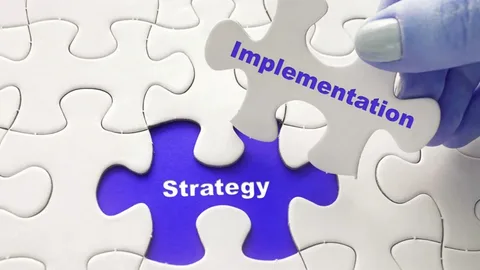
Individual Learning Plans (ILPs) help each student learn better. In this blog, you'll learn what ILPs are, why they are important, and how they are used and checked. We'll also talk about some challenges in using ILPs and ways to overcome them. This blog will give you a clear idea of how ILPs work and how they help students succeed.
What Are Individual Learning Plans?
Individual Learning Plans (ILPs) are special plans made for each student to help them learn in the best way for them. They include what the student needs to learn, how they will learn it, and what help they will get.
Key Components of an ILP
- Goals: Clear learning targets for the student.
- Strategies: Activities and methods to help the student reach their goals.
- Resources: Tools and support needed for the student to succeed.
- Monitoring: Regular checks to see how the student is doing and make changes if needed.
Goals and Benefits of ILPs
The main goal of ILPs is to help students succeed by giving them the support they need. Benefits include:
- Better learning outcomes
- Increased motivation
- More engaged students
Common Challenges in ILP Implementation

1. Administrative and Structural Challenges
Lack of Administrative Support: Schools need strong leaders to support and promote ILPs. 60% of schools report inadequate funding for ILP implementation.
Impact of Insufficient Leadership and Buy-In: When school leaders are not fully committed to ILPs, teachers, and staff may not take them seriously. This can lead to poor implementation.
Inadequate Funding and Resources: Schools need money and tools to create and maintain ILPs. Without enough funds, it’s difficult to provide the necessary support for students.
Financial Constraints: Budget limitations can prevent schools from buying the tools and resources needed for effective ILPs.
Limited Access to Necessary Tools and Technologies: Schools may lack the technology needed to develop and monitor ILPs. This makes it hard to keep track of student progress and make necessary adjustments.
Bureaucratic Obstacles: Complicated rules and procedures can slow down the implementation of ILPs. This can make it hard for teachers to create and update plans efficiently.
Complex Policies and Procedures: Difficult and unclear rules can make it challenging for teachers to follow the right steps in creating and using ILPs. This can lead to mistakes and delays.
3. Student-Related Challenges
Diverse Learning Needs: Students have different ways of learning. Some learn best by seeing, others by hearing, and some by doing. Creating ILPs that work for all these different learning styles is challenging.
Addressing Varied Learning Styles and Disabilities: Some students might have learning disabilities or other special needs. Teachers need to make sure ILPs address these issues, which can be difficult without the right support and resources.
Lack of Student Engagement: For ILPs to be effective, students need to be involved and interested in their own learning. If students are not engaged, ILPs won't work as well.
Motivating Students to Participate in ILP Activities: Keeping students motivated to follow their ILP activities can be hard. Teachers need to find ways to make learning fun and relevant to keep students interested.
Inconsistent Attendance: Students who miss a lot of school can fall behind in their ILPs. Regular attendance is crucial for the success of these plans.
Impact of Absenteeism on ILP Effectiveness: When students miss classes, it disrupts their learning progress. This makes it harder for teachers to stick to the ILP and for students to achieve their goals.
4. Parent and Community Involvement Challenges
Limited Parent Engagement: For ILPs to work well, parents need to be involved. Sometimes, parents may not have the time or interest to participate in their child's learning plan, which can hinder its effectiveness.
Overcoming Communication Barriers: Clear communication between teachers and parents is essential. Language differences or lack of access to communication tools can make it hard for parents and teachers to stay in touch and work together.
Encouraging Active Participation: Parents and the community play a vital role in supporting students' learning. Encouraging them to take an active role in ILPs can be challenging, but it’s necessary for the plans to succeed.
Cultural and Socioeconomic Factors: Families come from different backgrounds, and their cultures and financial situations can affect how they view and support ILPs. Understanding these differences is crucial for creating effective plans.
Understanding and Addressing Diverse Backgrounds: Teachers need to be aware of the diverse backgrounds of their students. This includes recognizing and respecting cultural differences and finding ways to address socioeconomic challenges that may impact learning.
Strategies to Overcome ILP Implementation Challenges

1. Strengthening Administrative and Structural Support
Securing Adequate Funding and Resources: Schools need enough money and resources to support ILPs. This can be done by carefully planning budgets and applying for grants.
Budget Allocation and Grants: Allocate funds specifically for ILPs. Seek out grants that can provide additional financial support for personalized learning initiatives.
Simplifying Policies and Procedures: Make rules and processes easier to understand and follow. This helps teachers implement ILPs more smoothly and efficiently.
Streamlining Bureaucratic Processes: Reduce unnecessary steps and paperwork. This allows teachers to focus more on helping students rather than dealing with complicated procedures.
Building Strong Leadership and Advocacy: Leaders should actively support ILPs. Strong leaders can inspire and motivate teachers, parents, and students to embrace and work toward successful ILP implementation.
Fostering a Supportive Administrative Environment: Create a positive environment where administrators back teachers and provide the necessary support. This includes offering resources, training, and encouragement to ensure ILPs are effectively implemented.
2. Enhancing Teacher Preparedness and Well-being
Comprehensive Training and Professional Development: 80% of teachers say they need more training to effectively implement ILPs. Teachers need proper training to use ILPs effectively. Schools can provide ongoing training through workshops and seminars to keep teachers updated on the best practices.
Workshops and Seminars: Regular workshops and seminars can help teachers learn new skills and strategies for creating and managing ILPs. These events provide opportunities for teachers to share experiences and learn from each other.
Effective Time Management Strategies: Teachers can benefit from learning how to manage their time better. This includes prioritizing important tasks and finding ways to work more efficiently.
Prioritizing and Delegating Tasks: Teachers should focus on the most important tasks and delegate to others when possible. This helps them manage their workload and ensures that ILPs get the attention they need.
Promoting a Positive Work Environment: Schools should create a supportive and positive environment for teachers. This includes recognizing their hard work, providing the resources they need, and fostering a sense of community.
Preventing Teacher Burnout: Teachers can easily become overwhelmed with their responsibilities. 75% of teachers report high workload and burnout as a challenge to ILP implementation. Schools should take steps to prevent burnout by providing adequate support, encouraging breaks, and promoting a healthy work-life balance.
3. Increasing Student Engagement and Participation
Adapting ILPs to Individual Student Needs: Each student is unique, so ILPs should be tailored to fit their specific needs. This means creating a plan that works best for each student’s learning style, interests, and challenges. By focusing on what each student needs most, ILPs can be more effective and engaging.
Personalized Learning Strategies: Personalized learning means adjusting teaching methods to fit each student. For example, if a student learns best through hands-on activities, the ILP can include more of these activities. This approach helps make learning more enjoyable and effective for each student.
Using Technology to Enhance Engagement: Technology can make learning more exciting and interactive. Schools can use educational apps, games, and online tools to help students learn in a fun way. Technology can also provide extra practice and support, making it easier for students to stay engaged.
Interactive and Adaptive Learning Tools: Interactive tools let students actively participate in their learning. For example, interactive quizzes and games can make lessons more engaging. Adaptive tools adjust to each student’s progress, offering challenges that match their skill level and helping them improve at their own pace.
Regular Monitoring and Feedback: Checking in on how students are doing helps keep them on track. Teachers should regularly review each student’s progress and give feedback. This way, students know how they’re doing and what they need to work on. It also allows for quick adjustments to the ILP if needed.
Continuous Assessment and Adjustment: Learning is an ongoing process, so ILPs should be regularly updated. Continuous assessment means frequently evaluating how well students are meeting their goals. If something isn’t working, adjustments can be made to the ILP to better fit the student’s needs and help them succeed.
4. Fostering Parent and Community Involvement
Effective Communication Channels: Keeping open and clear communication with parents is crucial. Schools should use various methods to share information, like emails, newsletters, and phone calls. These channels help parents stay informed about their child’s progress and how they can support their learning at home.
Parent-Teacher Conferences and Digital Platforms: Regular meetings between parents and teachers help everyone stay on the same page. Parent-teacher conferences allow for face-to-face discussions about the child’s progress. Digital platforms, like school websites or apps, can also provide updates and resources, making it easier for parents to stay involved even if they can’t attend in person.
Cultural Sensitivity and Inclusivity: Schools should respect and understand the diverse backgrounds of students and their families. This means being aware of different cultures and traditions and making sure everyone feels included. Schools can offer information in multiple languages or hold events that celebrate different cultures.
Respecting and Integrating Diverse Backgrounds: Recognizing and valuing each student’s background helps create a supportive environment. Schools should incorporate diverse perspectives into the curriculum and activities. This helps students feel valued and understood, making them more likely to engage with their learning.
Community Partnerships: Working with local organizations and businesses can benefit both students and the community. Schools can partner with these groups for resources, mentorship, or special events. These partnerships help enrich the learning experience and provide additional support and opportunities for students.
Conclusion
Implementing and monitoring Individual Learning Plans (ILPs) can make a big difference in how students learn and succeed. By addressing the challenges and using effective strategies, schools can create a supportive environment where every student gets the help they need. This approach ensures that each child’s unique needs are met and helps them achieve their best.
For more tips on how to build a supportive learning environment, check out our blog, "The Importance of Strong Relationships Between Teachers & Students." It offers valuable insights on how strong teacher-student relationships can further enhance student success and engageme